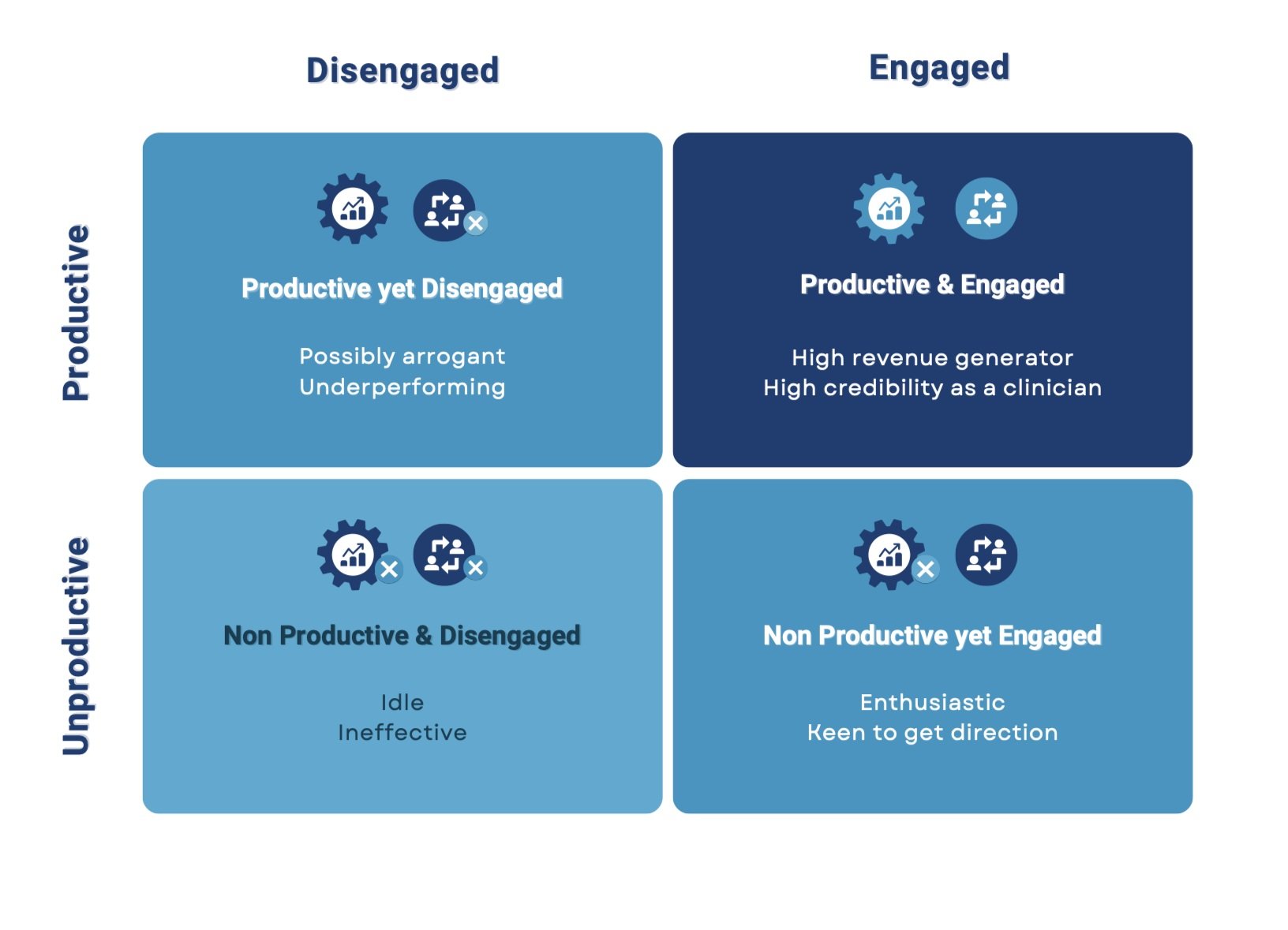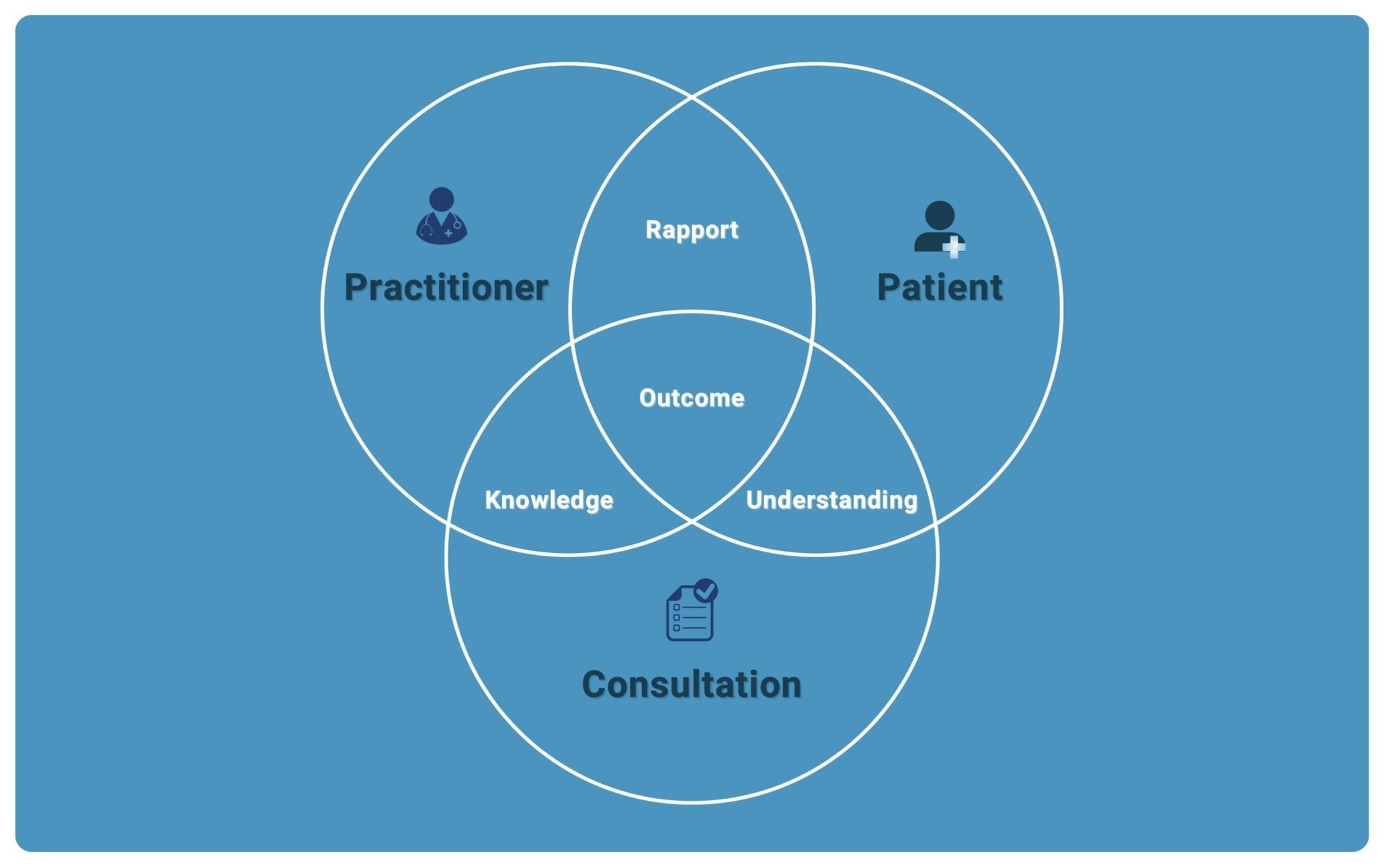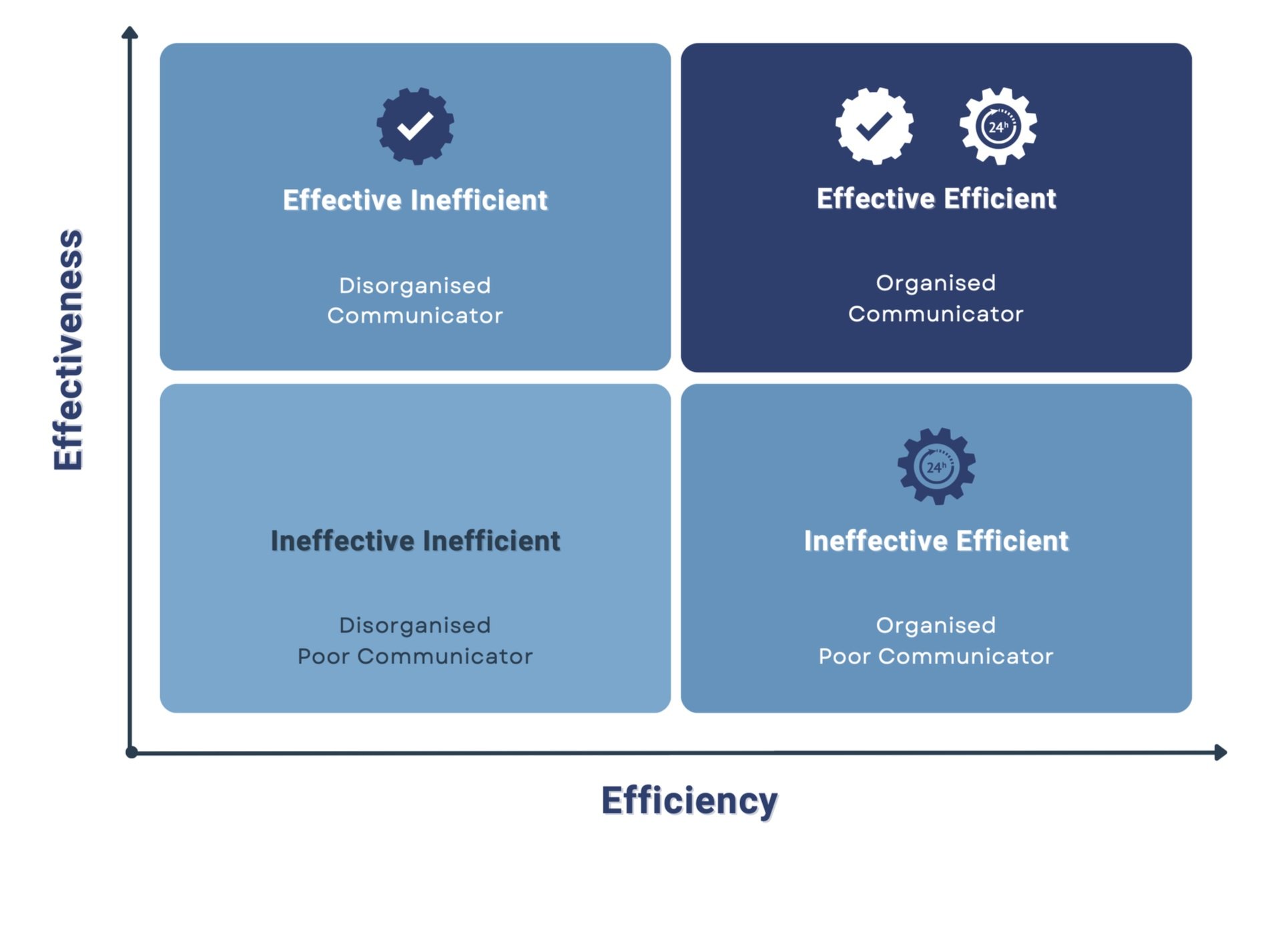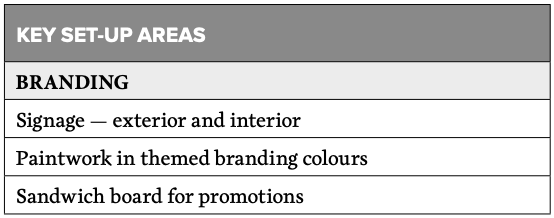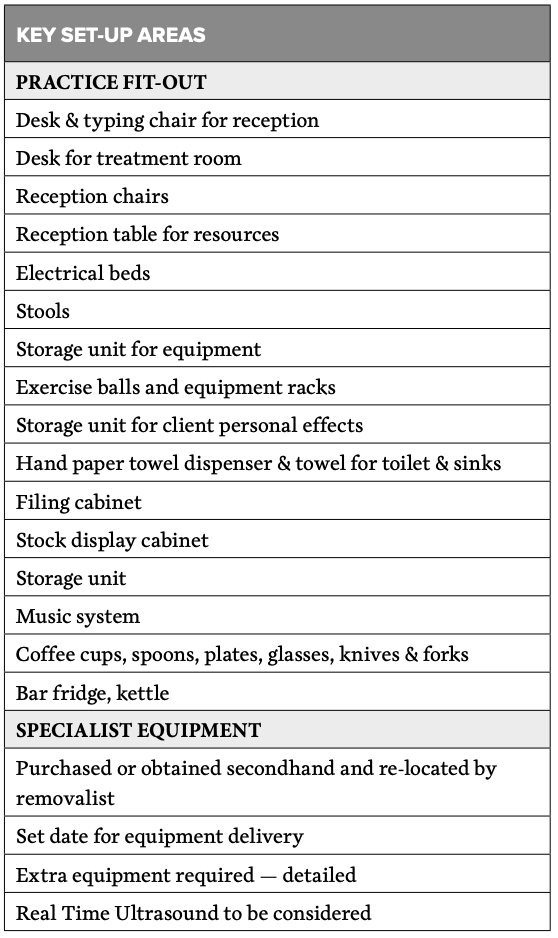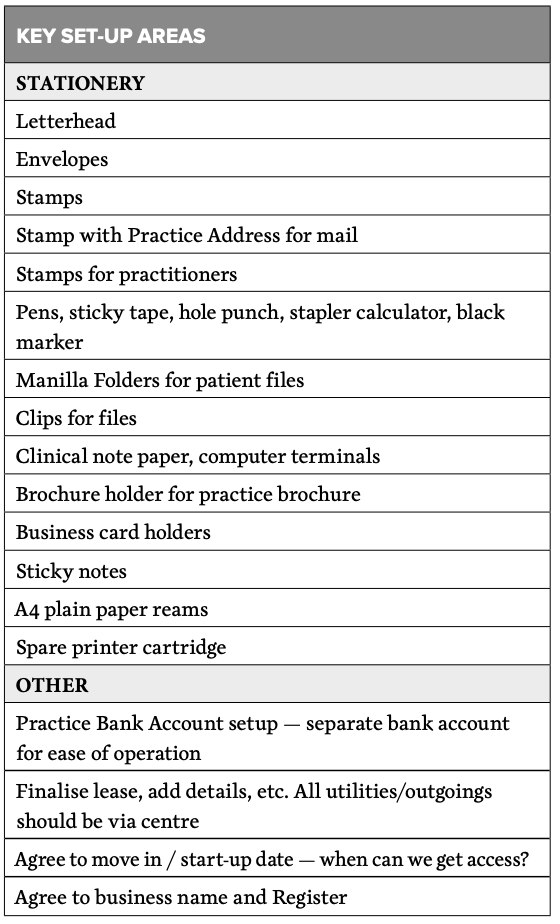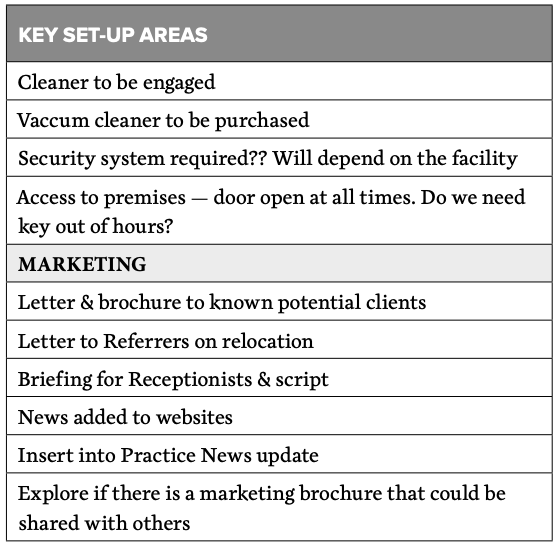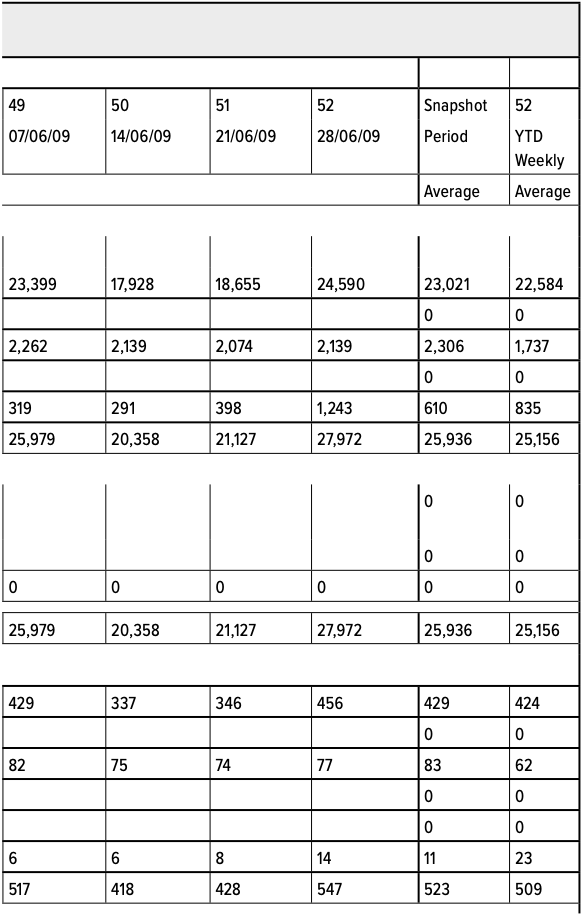Book Resources - Diagrams
The Health Practitioner’s Journey
The Health Practitioner’s Journey - 4 Stage Model
Figure 1 (page 7)
A four-stage career plan that takes a health practitioner from graduation through to financial and personal success. It details the steps you need to take to gain clinical excellence and commercial success and how, once this is established, you are able to maximise and then leverage the equity this has created.
All the while, harvesting the knowledge you need to fulfil your career and personal potential. It is the perfect companion for every health practitioner no matter where you are along your career journey.

10–15% of a therapist’s time may be unproductive because of cumbersome documentation and administrative tasks. Such tasks may include poor digital record-keeping, mistakes with bookings, telephone interruptions, etc. To reduce the burden of these tasks, you should work with the reception or admin staff to streamline calls, check on the appointment diary to see why there are problems, or even discuss the practice software issues with the practice owner/manager.
I have a table that will assist you to be more productive:
The Engagement Model
Figure 2 (page 14)
The Consult Model
Figure 3 (page 21)
It is important to explain how the SOAP approach and the eight steps of selling work within the consultation. From my experience, if you join those two approaches to the consult you will find that the patient is more likely to provide more information and be more at ease as you pursue the questioning process. The consult should also come to a more productive conclusion.
Most undergraduate programs in healthcare do not focus on planning. Undergraduate training will help you to structure your consultation and treatments, but not assist you with how you manage your time or perform other important activities tasks, such as attending courses or reading articles. Detailed and effective planning involves making efficient use of your time.
Time Management Matrix
Figure 4 (page 35)
The Communication Model
Figure 5 (page 41)
Being effective is based on how you work with people, how you develop relationships and work towards a coherent plan and progress through your career. Efficiency is the way you get things done. Being efficient relates more to actual things that need to be done and usually do not involve relationships. For example, if you do not efficiently arrange a meeting time with your mentor, then you will not be able to have an effective engagement with them. By applying yourself to understanding these behaviours and then seeking feedback from others about how you are performing, you will gradually learn how to be more effective and efficient.
I created the following model to emphasise and clarify the differences between these two useful modes of working.
The Ladder of Loyalty
Figure 6 (page 52)
This diagram describes the status of an individual’s relationship with you as a healthcare practitioner. The aim is to help people progress up the Ladder of Loyalty. Progress up the ladder is driven by the development of a relationship with that patient.
The Three A’s Model
Figure 7 (page 61)
Availability
The best place to start is to make sure you are available to see your patients.
Ability
Patients might not have the expertise to assess your technical ability. The only measure they will have will be whether they improve or not. If they improve, they will most likely attribute their improvement to your ability as a therapist.
Affability
Affability (being friendly, sociable, jovial and gregarious) is a personal quality that in healthcare we all have to some degree. We are mostly drawn to such professions because we want to help others to live more fulfilling lives.
The EBA Model
Figure 8 (page 77)
Emotional Bank Account
Having an easy rapport with patients will build your confidence and encourage patients to return to see you again should they suffer a subsequent injury or problem with their health. In Stephen Covey’s book The Seven Habits of Highly Effective People, he speaks of developing a positive Emotional Bank Account (EBA) with your interactions in all aspects of your life.
The Circle of Influence & The Circle of Concern
Figure 9 (page 78)
Another lesson I have learnt from Stephen Covey’s Seven Habits of Highly Effective People is to focus on your circle of influence, rather than your circle of concern. Applying this approach will help you focus on what you can truly change, not on activities outside your sphere of influence that you cannot control (like complaining about the weather!!)
The Circle of Concern is the larger outer circle, which represents everything you care about. The Circle of Influence is the smaller inner circle and consists of everything you have direct control over. The larger your Circle of Concern is, the smaller your circle of influence becomes because you can only pay attention to a limited number of things at once. By focusing on your broader worries, you can end up having less control over what you want to achieve or can influence.

Risk Benefit Reward Model
Figure 10 (page 85)
There are both benefits and risks for someone to refer to you. You need to negate the risk and propagate the benefit.
Two Halves of a Whole
Figure 11 (page 120)
I see the elements of clinical excellence and commercial success as being two halves of a whole for a successful practitioner:

Key Set-up Areas
Figure 12 (page 150-156)
The next step will focus on getting started, executing the plan and implementing the strategy. I have created an indicative non-specific checklist below that may assist you in making sure that all the elements involved with commencing a practice are covered.
Practice Floorplan
Figure 13 (page 161)
Creating a space that enables you to operate a good practice is always a challenge. The fit-out should allow for easy and logical client flow, meet the needs of the office staff, enable practitioners to provide optimum delivery of their service, and be comfortable and inviting for your clients. I advise the best way to achieve the above is to have a large piece of paper or computer image that is to scale and can be easily drawn upon.
This example is of a particularly small area but demonstrates how such a space can be used to operate a small business.
Measure of Staff Performance
Figure 13 (page 191)
Any measures that you create should be meaningful to you and also highlight important aspects of the business. If you create too many key measures, you will get lost reviewing them. I recommend that you have no more than five measures for the different aspects of the business, like finance performance, business culture, staff performance, a referrer data base, annual growth measures as examples. Create clear objectives for these key areas. Have three to five methods of achieving the objective and have measures that can be assessed with either a yes or no answer.
KPI Report
Figure 14 (page 192-195)
Setting up regular reporting of progress is essential to know how your business is travelling at key time points. Two important reports that should be performed with your accountant are monthly profit and loss statements, and the annual budget that covers the projected income and expenditure for the coming year. The third important report is your weekly KPI report:

